A frame a bed and a sliding rod PQ of resistance R, start moving with the velocities v and 2v respectively parallel to a long wire carrying steady current I, as shown in the figure.

charge on the capacitor at time t is q=Cμ0ivln22π[1−e−t/RC]
charge on the capacitor at time t is q=Cμ0ivln2π[1−e−t/RC]
current passing through the resistor at time t is i=μ0ivln22πR[e−t/RC]
current passing through the capcitor at time t is i=μ0ivln2πR[e−t/RC]
εPC=vμ0i2πln2
εPQ=2vμ0i2πln2
εnet=μ0iv2πln2
q=Cε[1−e−t/RC]
i=εRe−t/RC
Similar Questions
U-frame ABCD and a sliding rod PQ of resistance R, start moving with velocities v and 2v respectively, parallel to a long wire carrying current i0. When the distance AP=1 at t=0, determine the current through the inductor of inductance L just before connecting rod PQ loses contact with the U-frame.
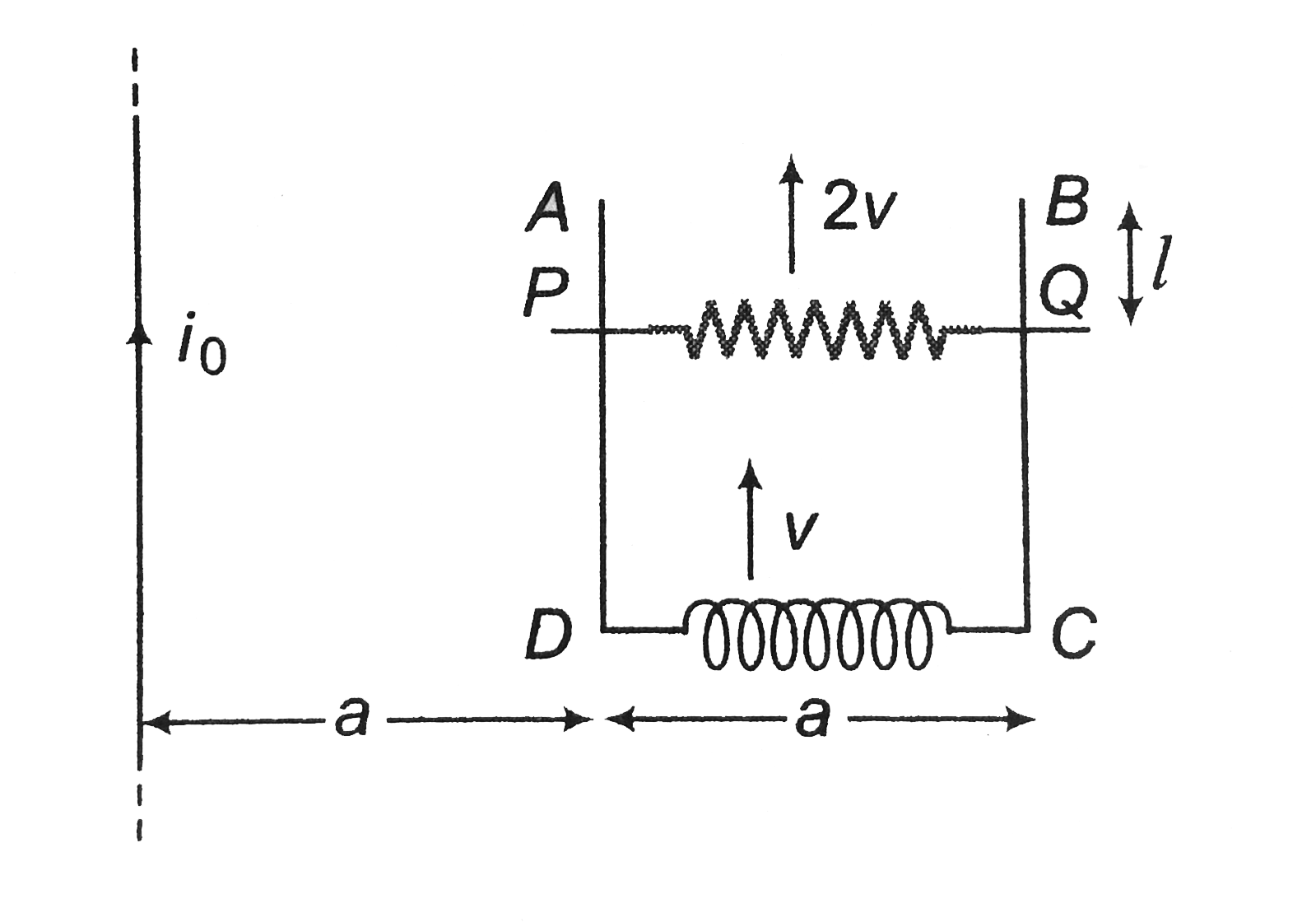 View Solution
View SolutionA rod having length l and resistance R is moving with velocity v on a π shape conductor. Find the current in the rod.
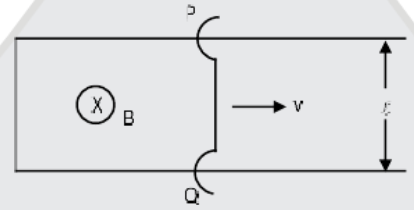 View Solution
View SolutionA conducting circular loop of radius a and resistance per unit length R is moving with a constant velocity v0 , parallel to an infinite conducting wire carrying current i0. A conducting rod of length 2a is approaching the centre of the loop with a constant velocity v02 along the direction 2 of the current. At the instant t=0, the rod comes in contact with the loop at A and starts sliding on the loop with the constant velocity. Neglecting the resistance of the rod and the self-inductance of the circuit, find the following when the rod slides on the loop.
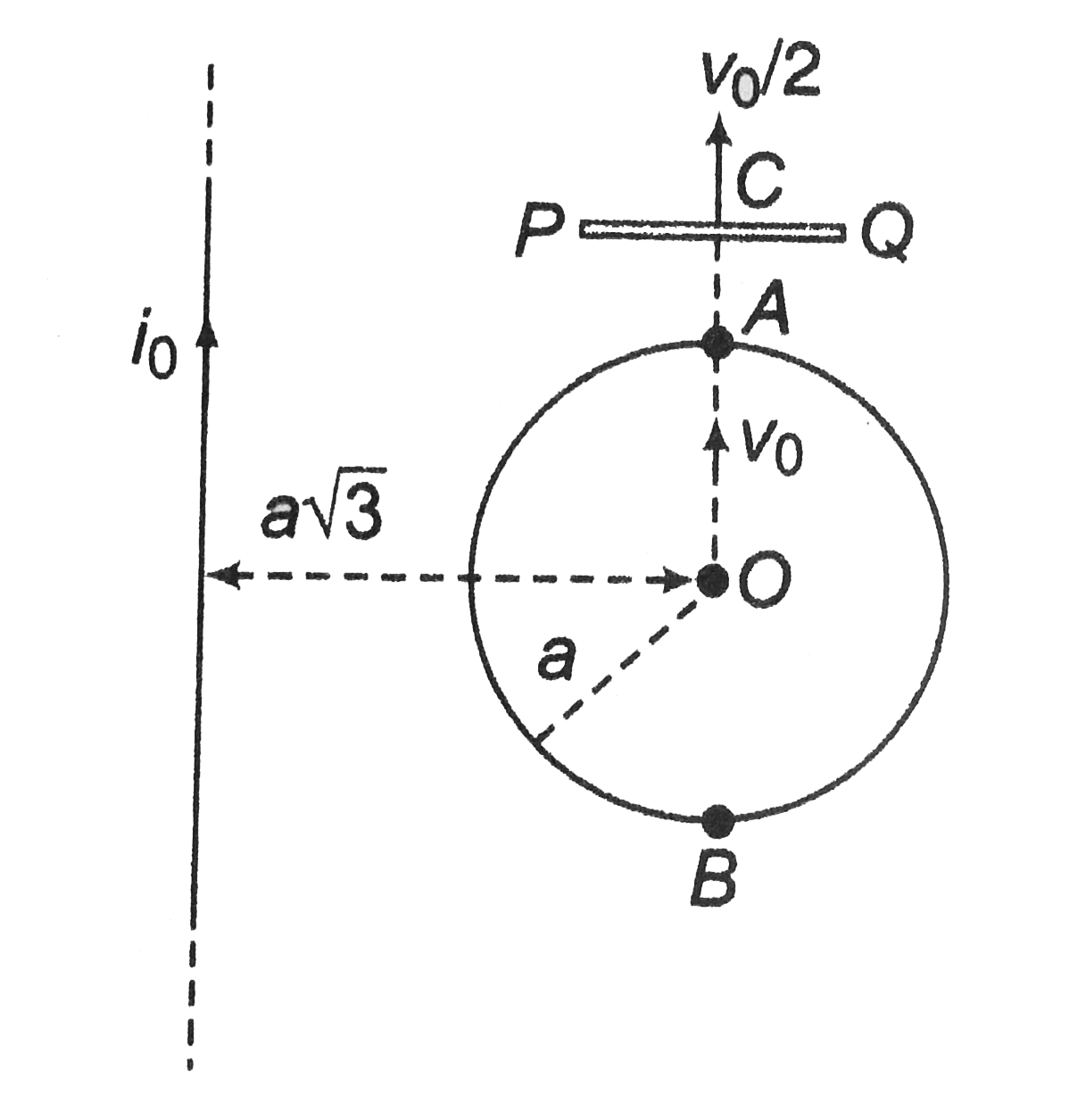
(a) The current through the rod when it is at a distance of (a2) from the point A of the loop.
(b) Force required to maintain the velocity of the rod at that instant.View SolutionWhich of the following figure shown the magnetic flux denstiy b at a distance r from a long straight rod carrying a steady current I ?
View SolutionAn equilateral triangular frame with side a carrying a current I is placed at a distance a from an infinitely long straight wire carrying a current I as shown in the figure. One side of the frame isparallel to the wire. The whole system lies in the xy-plane. Find the magnetic force F acting on the frame.
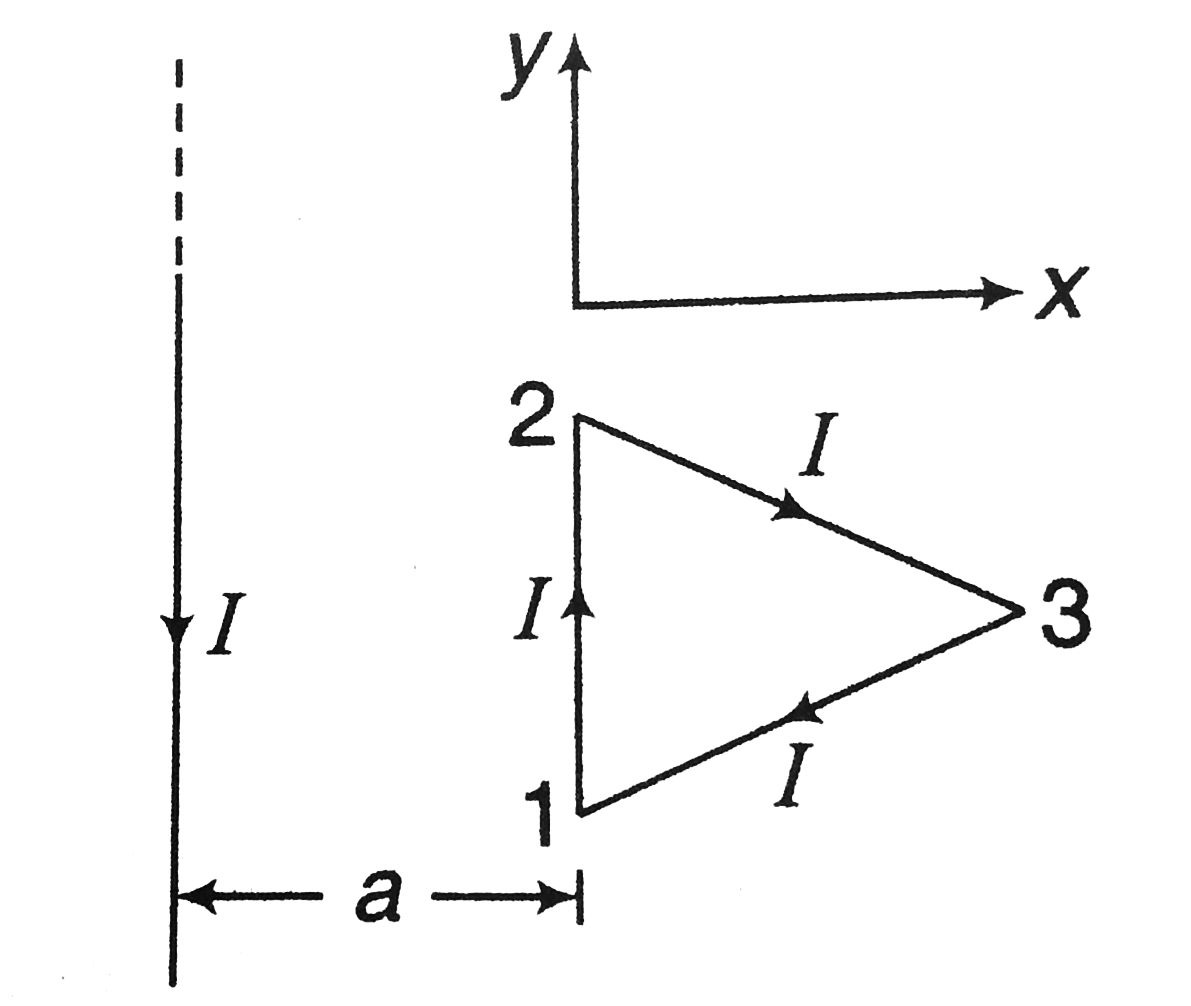 View Solution
View SolutionA small square loop of edge a and resistance R is moved with velocity v0 away from an infinitely long current carrying conductor carrying current I so that the conductor and side of square are always in same plane. Find induced current in loop at a separation of r
View SolutionA uniform metal rod is moving with a uniform velocity v parallel to a long straight wire carrying a current I. The rod is perpendicular to the wire with its ends at distance r1andr2 (with r2>r1) form it. The E.M.F. induced in the rod at that instant is
View SolutionA long straight wire AB carries a current I. A proton P travels with a speed v, parallel to the wire at a distance d from it in a direction opposite to the current as shown in the figure. What is the force experienced by the proton and what is its direction?
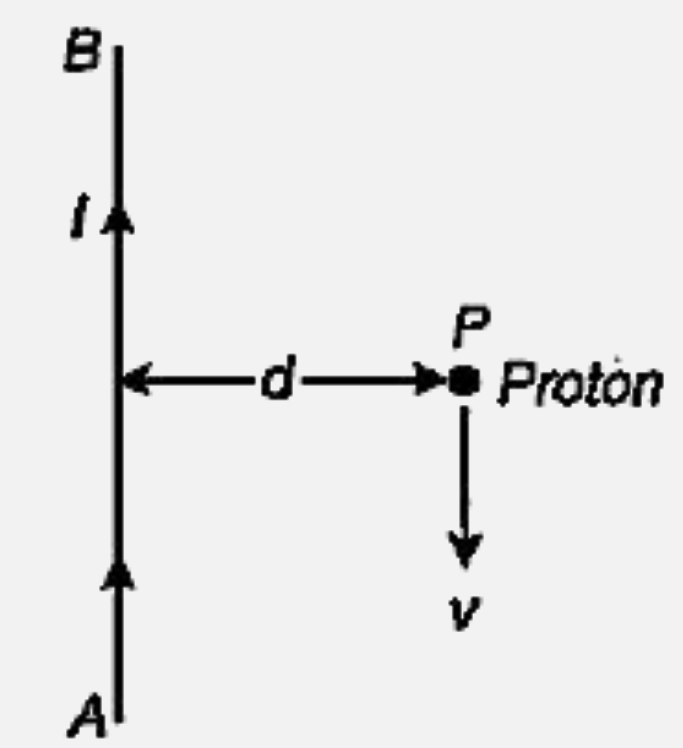 View Solution
View SolutionA metallic rod of mass m and resistance R is sliding over the 2 conducting frictionless rails as shown in Fig. An infinitely long wire carries a current I0. The distance of the rails from the wire are b and a respectively.
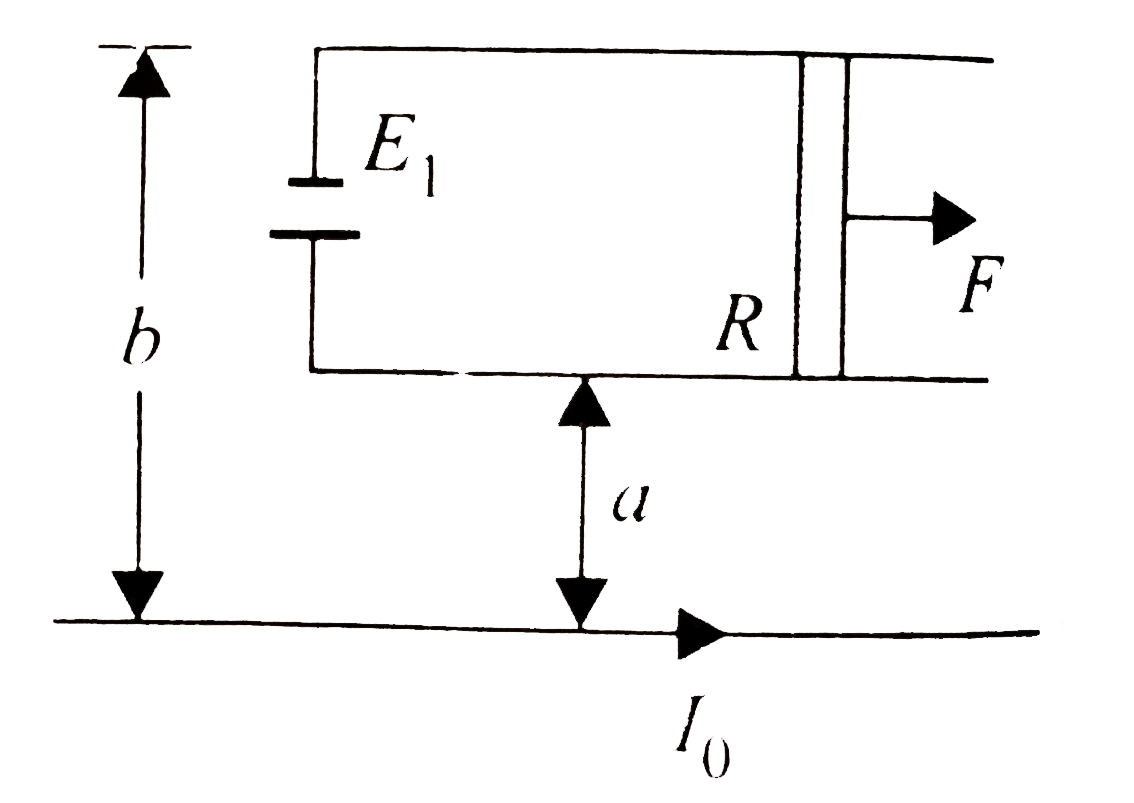
Find the value of current in the circuit if the rod slides with constant velocity v0View SolutionA metallic rod of mass m and resistance R is sliding over the 2 conducting frictionless rails as shown in Fig. An infinitely long wire carries a current I0. The distance of the rails from the wire are b and a respectively.
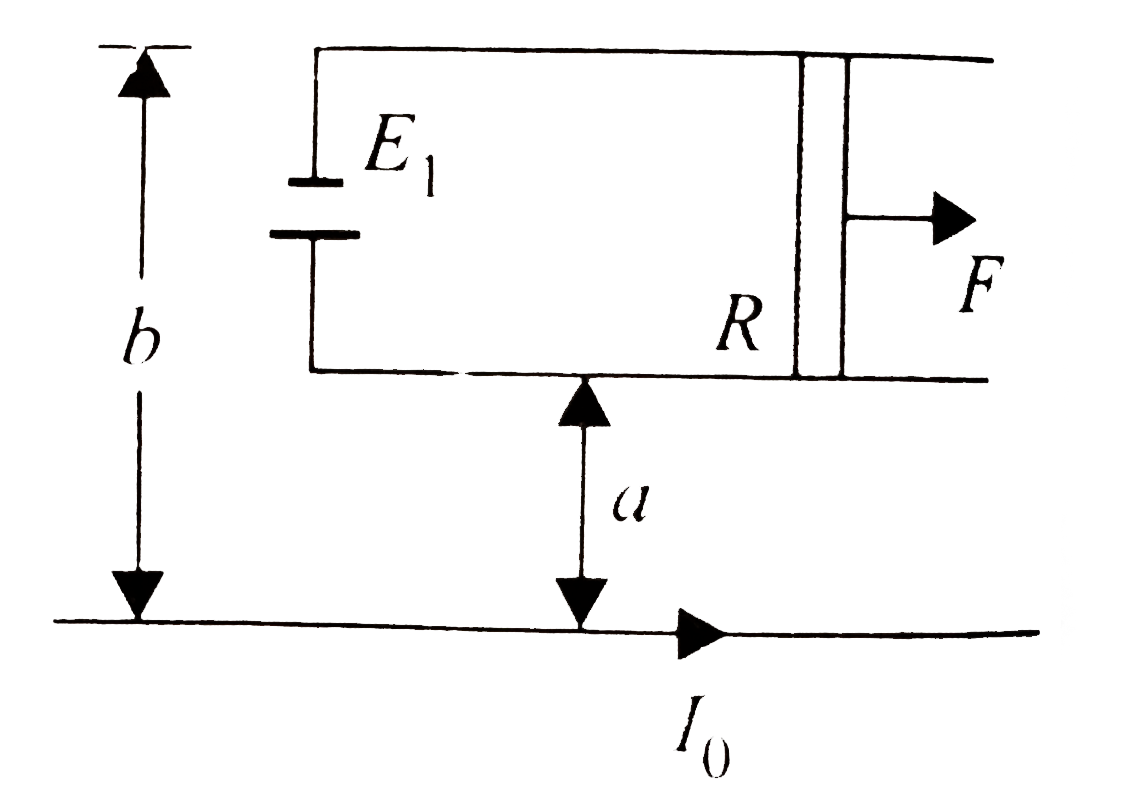
Find the value of F if the rod slides with constant velocityView Solution

